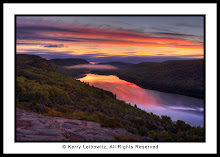I know that when it comes to people who typically read this blog I will be preaching to the choir on this issue, but even the choir needs guidance sometimes.
The Gulf of Mexico is dying.
There, I said it. No, I am not exaggerating. It won't be long before everything in the Gulf of Mexico is dead. That is the future we are looking at right now, and a grim future it is.
So, what can you do? The answer, in a nutshell, is do SOMETHING. It seems to me that people on a national scale are doing relatively little to help with this unfolding disaster and to prevent future drilling that will inevitably lead to more disasters of this sort.
It isn't just citizens that are handling this poorly however; the powers that be are failing pretty miserably as well. I am including BP in the 'powers that be' category because, lets face it: the pockets of the power are oily with campaign contributions from BP and other oil giants.
So, as citizens of this dying planet we MUST stand up and fight for it. Protest, boycott, do whatever you have to. Offshore drilling needs to stop now. It is not the only horrible thing that the western way of life results in for the environment, but hey, if you are going to stop one thing at a time, it's a great place to start. Sign all the petitions you want, but until the people take to the streets nothing will change. Why isn't anyone furious enough to start marching? Let's march. I'll join. Will you?
Here's a website about actions taking place across the country on Friday, May 14: http://www.
Okay, so you aren't the marching and candle light vigil type…I get it, but you can do your part too. And no, I don't mean sending your hair down to the gulf to help absorb oil (although it can't hurt, I guess). I mean that we can use our brains to help the situation.
BP and the US Coast Guard need to release to the public EVERYTHING they know about the current situation. The psi of the oil geyser (it isn’t a spill or a leak, a geyser is much more accurate) and all of the technical aspects they know about it. They need to let the public know everything so that the intelligent and educated public can work to come up with solutions. When this accident occurred BP had no plan A. When they came up with their impressive looking (but ultimately ineffective) funnel/containment vessel plan I thought it might work: it didn't. Now the plan is to shoot golf balls and torn up tires into the leaking area. I am no engineer but I'm going to go ahead and say that that probably will not work. I have yet to hear a plan C (except Russia's recommendation to use nuclear weapons). So, why not do more than just open a tip line for the public, how about actually providing them with information to come up with USABLE solutions?
I will end my written rant there, but below I've put pictures of the endangered species BP themselves listed in their Exploration Plan for this location (you can view it in its entirety here: http://www.gomr.mms.gov/PI/
Twenty-nine species of marine mammals occur in the GOM. There are 28 species of cetaceans (7 mysticete and 21 odontocete species) and 1 sirenian species, the manatee.
Five baleen whales, one toothed whale, and one sirenian occur in the GOM and are listed as endangered under the Endangered Species Act (ESA):
-The Northern Right Whale
-The Blue Whale
-The Fin Whale
-The Sei Whale
-The Humpback Whale
-The Sperm Whale
-The West Indian Manatee
The sperm whale is common in oceanic waters of the northern GOM and appears to be a resident species, while the baleen whales are considered rare or extralimital in the Gulf. The West Indian Manatee typically inhabits only coastal marine, brackish, and freshwater areas.
Five sea turtles inhabit the waters of GOM and are listed as endangered: the Leatherback, Green, Hawksbill, Kemp's Ridley, and Loggerhead turtle. These five species are all highly migratory, and no individual members of any of the species are likely to be year-round residents of the proposed area of interest.
There are no critical habitats designated within the Gulf of Mexico for the threatened and endangered species above."














0 comments:
Post a Comment